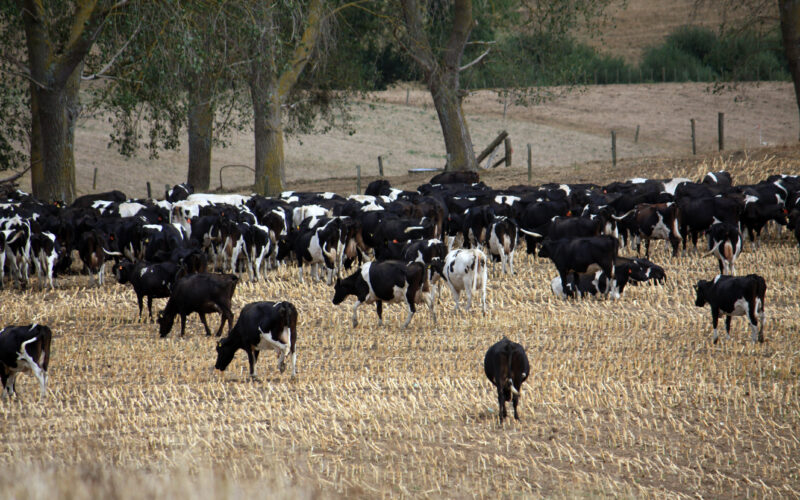It is estimated that the global impact of heat stress will cost the dairy industry $50 billion by 2050 – as well as bringing about a 137% increase in carbon dioxide emissions compared to 2020.
The figures could be higher depending on the milk price and affects cow mortality.
The data was presented by the International Farm Comparison Network – Dairy Research Network chief executive and founder Torsten Hemme during a session at the 2023 World Dairy Summit on managing heat stress in dairy cattle.
His team built a model based on 15 studies from 12 countries and used more parameters than previous methods for analysing heat stress.
The model estimates production loss and CO2 equivalent emissions and builds profiles for farms across the globe.
The losses estimated for 2020 equated to about $22bn, with tropical countries suffering more than temperate countries.
Carbon dioxide emissions were estimated to increase up to 3% per herd due to heat stress with a lower impact in Europe but higher in emerging countries such as Brazil, India, Pakistan, China and Kenya.
By 2050, there are likely to be seven to 10 more heat stress days on average around the world in comparison to 2020. Productive herds in California may expect 45 more hot days and 32 more in Wisconsin. Europe and Japan will have 22-30 more hot days and Russia, Australia and South Africa will be the least affected by the changing climate, according to the modelling.
The cost of heat stress goes beyond production, with impacts seen on health, somatic cell count, reproduction efficiency, lameness and dry matter intake.
Heat stress is widely measured in livestock by the temperature humidity index (THI), which is a bioclimatic index that combines temperature and relative humidity.
A THI of 68 is considered mild, and research suggests a THI of 65 to be the new threshold for high-producing cows, although there are challenges with determining THI measurements accurately in pasture-based systems.
Data extracted from a scientific reviews conducted by the International Dairy Federation’s scientific team delves into the critical milk yield threshold for Holstein Friesian cows raised in various countries. The findings reveal that the breakpoint appears to be influenced by latitude, with lower latitudes correlating to higher THI values and higher latitudes associated with lower THI.
Looking at today’s climate, there is a widespread risk of heat stress for cows everywhere, especially in tropical areas. How bad it gets depends on how well we can cut down on greenhouse gas emissions. If we stick with the usual way of doing things, there is a growing risk of heat stress globally, even in colder places.
But the good news is that even a slight reduction in heat has a significant and positive effect, as explained by Dr Mario Mondaca Durate, a senior research engineer from VES-Artex.
During his summit presentation, he said that cooling methods should be employed when temperatures start to hit 20degC.
When it comes to keeping cows cool, various methods were discussed. Ventilation, which removes heat, moisture, and gases, proves effective. Using airspeed to cool cows not only boosts milk production but also increases their lying times.
Another method is water cooling, commonly employed in New Zealand dairy sheds, where water is used to create a cooler environment for the animals.
The most cost-effective way to cool is in the yard where cows stand before milking, especially since their body temperature rises if no cooling is provided.
Ensuring the wellbeing of dairy cows and the long-term success of the global dairy industry in a changing climate involves practical steps like using ventilation and water cooling.
These strategies are important not just for the economy; they are essential for keeping the cows comfortable and ensuring the industry can adapt to a warmer world.
The clear messaging from the session at the summit was that taking proactive measures to combat heat stress is a crucial part of making sure dairy farming remains sustainable and resilient in the face of climate change.
This article first appeared in the December edition of our sister publication, Dairy Farmer. Samantha Tennent attended the event with support from WelFarm and the International Dairy Federation.






